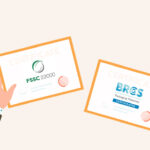Super sacks, often called bulk bags or big bags, are essential in many industries for storing and moving materials like grains, powders, and construction supplies. They are very handy and can hold much stuff, making them popular for various uses.
This blog will dive into everything you need about super sacks. You’ll learn about their different styles, what they’re made of, and why they are useful for businesses. We’ll also give you tips on handling these sacks safely and talk about the rules for using them. By the end, you’ll see how super sacks can make things easier and cheaper in your business.
Materials Used in Super Sacks
Super sacks are mostly made from polypropylene fabric. This material is great because it’s tough and lasts a long time without breaking. It’s also safe because it doesn’t react with most chemicals. This makes it perfect for carrying different materials, whether food products or chemicals.
The strength of polypropylene means that super sacks can be used repeatedly. They don’t rip easily and can handle being moved around a lot, which is great for businesses that need to ship goods often. Plus, since they’re so strong, super sacks help keep whatever is inside safe during transit.
Another plus is that polypropylene is kind to the environment. These bags can be recycled, which helps cut down on waste and makes businesses more eco-friendly. The safety features of polypropylene also mean there’s a lower risk of workplace accidents.
Design and Varieties of Super Sacks
Super sacks come in various designs, each tailored to meet different industry needs. They usually have features like spouts, loops, and panels to make handling and using the sacks easier.
- Spouts: Some super sacks have spouts at the top or bottom. These are handy for industries that need to pour out contents smoothly, like powders or grains. You can tie the spouts to control how much material comes out, making it neat and easy.
- Loops: All super sacks have loops but can vary in number and style. These loops are for lifting the sacks with machines like forklifts. Having two or four loops can make lifting them easier, especially when heavy.
- Panels: The body of super sacks can be made with different panels. Some have a single piece that wraps around, creating a tubular shape for extra strength. Others might have sewn-together panels customized for specific shapes or sizes.
These features make super sacks very flexible. For instance, a construction company might use sturdy, multi-loop sacks for carrying sand or cement. At the same time, a food manufacturer might choose sacks with easy-to-use spouts for packaging flour or sugar. This flexibility lets businesses pick the perfect sack for their needs, ensuring efficiency and safety.
Advantages of Using Super Sacks
Super sacks offer lots of benefits that make them a smart choice for businesses looking to save money and work more efficiently:
- Cost-Effectiveness: Super sacks are cheaper than many other types of packaging. They can hold a lot of material in one bag, so you need fewer bags overall. This saves a lot on materials and handling costs.
- Reduced Shipping Costs: These sacks are light and flexible, so they don’t take up much empty space and can be packed efficiently. This means you can fit more into each shipment, significantly lowering shipping costs.
- Environmental Benefits: Super sacks are not only reusable but also recyclable. This means they can be used many times before being turned into new products, helping to reduce waste. Recycling super sacks also uses less energy and resources than making new ones.
- Efficiency in Operations: Super sacks make operations smoother in many ways. They are easy to fill, move, and store, which speeds up these processes and cuts down on labor costs. Moving large quantities of products quickly and safely helps streamline operations and boost productivity.
Safety and Handling Guidelines
Handling super sacks safely is crucial to avoid accidents and ensure smooth operations. Here are some key tips and best practices for using super sacks:
- Check for Damage: Always inspect a super sack for any tears, cuts, or weak spots before using it. Using damaged sacks can lead to spills or accidents, especially when lifting heavy loads.
- Use the Right Equipment: Use the proper lifting equipment, like forklifts or hoists, and ensure the loops on the super sacks are fully secured to the lifting device. This prevents the sack from slipping or falling during movement.
- Follow Weight Limits: Each super sack has a maximum weight limit. Stick to these limits to avoid overfilling, which can stress the sack and cause it to break.
- Keep Clear During Lifting: Ensure everyone stays clear of the area when moving or lifting awesome sacks. If a sack does fall, no one must be in the way.
- Store Properly: Keep super sacks in a clean, dry place to prevent them from getting wet or dirty. Proper storage helps keep the sacks and their contents in good condition.
Common Challenges and Solutions
- Challenge: Spillage during filling or unloading.
- Solution: Opt for sacks with spouts for controlled pouring and ensure they are securely fastened after filling.
- Challenge: Sacks need to stand upright.
- Solution: Choose super sacks with stable bases and ensure they are evenly filled to help them stand properly.
Regulatory and Industry Standards
Super sacks must meet various regulatory standards to ensure they are safe and effective for use in different industries. These standards are crucial because they protect workers and the environment and ensure products are handled properly.
- Food Industry: Super sacks used in food transport and storage must meet the FDA’s standards for food contact. This ensures the materials in the sacks don’t contaminate the food.
- Chemical Industry: For chemicals, super sacks need to follow standards set by agencies like the U.S. Environmental Protection Agency (EPA). This ensures they are strong enough to safely contain and move hazardous materials without leaking.
Impact of Compliance
Following these standards affects how super sacks are used across different sectors:
- Safety: Meeting standards means the sacks are less likely to fail during use, reducing the risk of accidents and spills.
- Quality Control: Standards ensure each sack meets certain quality and safety criteria, helping businesses keep consistent and reliable operations.
- Environmental Impact: Regulations often include guidelines for reducing environmental effects, such as requiring sacks to be recyclable or reusable.
Applications of Super Sacks in Various Industries
Super sacks are used in various industries to make operations smoother and cut costs. Here are some ways different sectors use these flexible bulk containers:
- Agriculture: Farmers use super sacks to store and move grains, seeds, and fertilizers. These sacks protect the contents from moisture and pests, keeping the products safe during storage and transport.
- Construction: Super sacks are essential for carrying materials like sand, gravel, and cement. They make moving these heavy materials around job sites easier and reduce spillage.
- Chemicals: Chemical manufacturers use super sacks to safely handle powders and granular materials. The sacks’ strong, durable nature prevents leaks and contamination, which is key for keeping safety standards.
- Food Industry: Super sacks transport bulk items like flour, sugar, and spices. Their use in this sector is critical for keeping things clean and preventing contamination during food production.
Super sacks have become invaluable in these industries, providing solutions that boost efficiency, enhance safety, and reduce environmental impact. Their adaptability and cost-effectiveness make them popular for businesses looking to optimize their operations.




